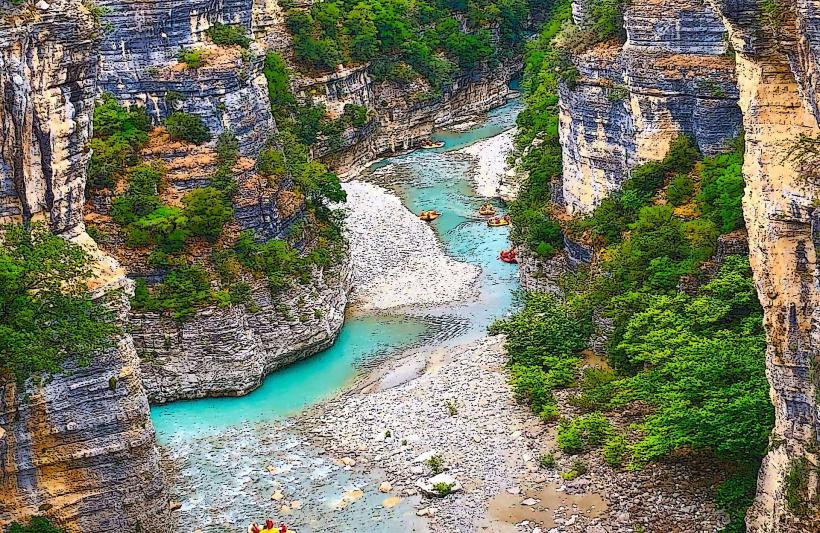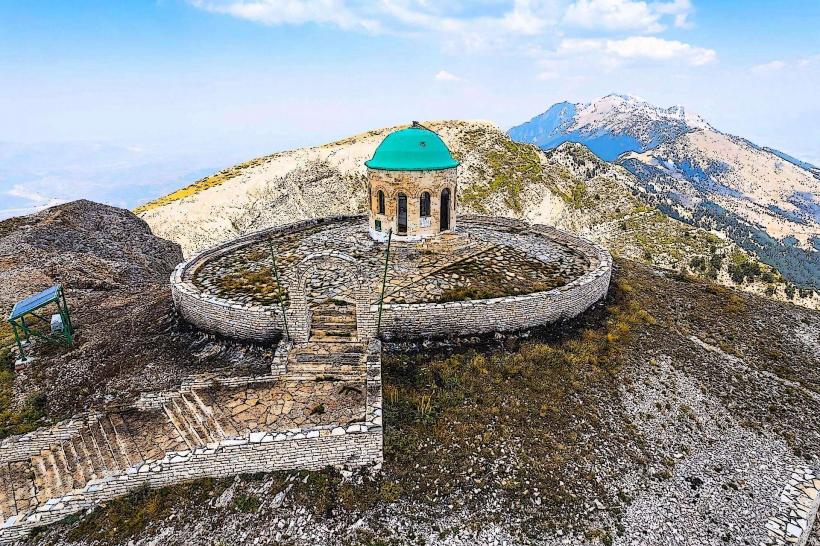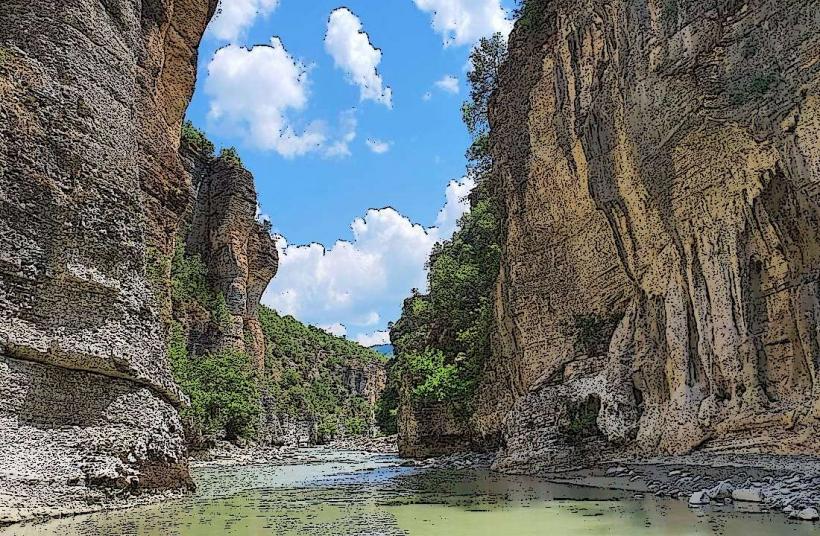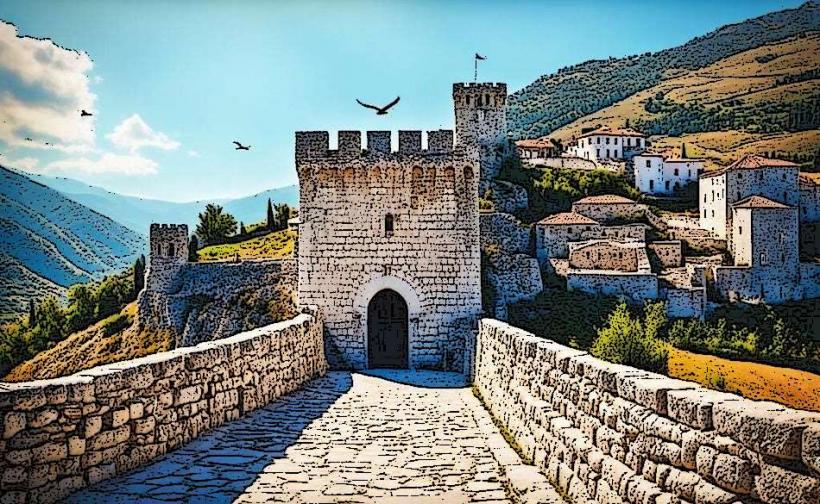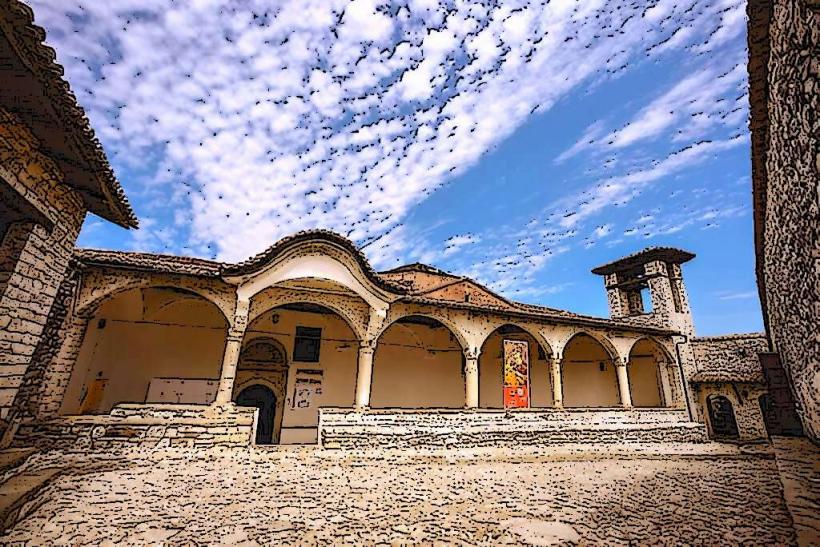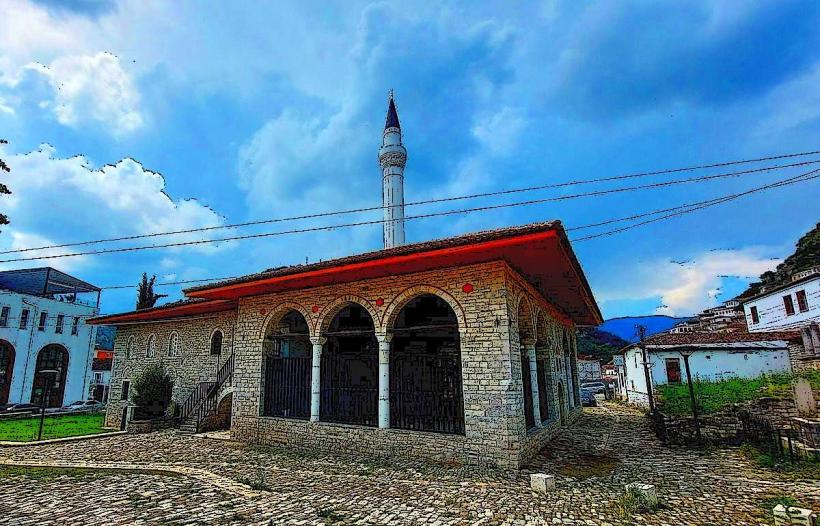Information
Landmark: Ethnographic MuseumCity: Berat
Country: Albania
Continent: Europe
Ethnographic Museum, Berat, Albania, Europe
Overview
In the heart of Berat, Albania, the Ethnographic Museum (Muzeu Etnografik i Beratit) offers a vivid glimpse into the region’s heritage, from handwoven carpets to centuries-ancient household tools, consequently step inside the museum and you’ll explore centuries of life in Berat-its people’s customs, their woven shawls, the rhythms of their days, and the history that shaped the town and the hills around it.Set in a beautifully preserved Ottoman-era house with sun-warmed stone walls, it offers a rich window into the region’s cultural evolution, as well as tucked into Berat’s Mangalem Quarter, the museum sits among whitewashed houses with red-tiled roofs, in a district recognized by UNESCO for its remarkably preserved Ottoman architecture.Set inside an 18th-century Ottoman-era home, the museum offers visitors a genuine glimpse into the daily life and culture of historic Berat, with arched windows catching the light, wooden balconies stretching over the street, and thick stone walls that hold the echo of centuries, at the same time visitors get a glimpse of the era’s architecture and the everyday life of locals-like the worn wooden spoons still resting in a kitchen corner.Founded in the 1970s, the museum set out to preserve and share the traditional cultural practices of Berat and the nearby villages, on top of that it was created as part of a larger push to gather and record Albania’s ethnographic history, especially during the swift-changing social shifts of the communist era.Among its treasures, the Ethnographic Museum showcases vibrant Berat-region garments-embroidered vests, heavy wool skirts, and radiant woven sashes, meanwhile the museum showcases an array of costumes for men, women, and children, each covered in intricate embroidery and patterns echoing the region’s distinct culture.Wool, silk, and cotton-often handwoven and dyed with deep, earthy hues-reveal the skill and style of the era’s artisans, equally important visitors can explore the meaning woven into each pattern and color of the garments, then step over to perceive brass coffee pots, carved spoons, and other household treasures once used by Ottoman-era families.You’ll find everything from wooden spoons and sturdy chairs to glazed ceramic bowls and hand-carved weaving looms, after that the objects offer a window into Berat’s blend of practicality and artistry, a region where skilled hands shaped daily life.In the museum’s rooms, wooden chests with worn brass handles, tall armoires, and sturdy cabinets show how local families once lived, besides you’ll also find tools for farming and displays of fine handicrafts, both central to the region’s work and traditions.In the Ethnographic Museum, you’ll find traditional tools for farming, woodworking, metalworking, and leatherworking, each worn smooth by years of use and showing the ingenuity of local craftspeople, at the same time visitors can behold how textiles were woven, baskets braided, and pottery shaped-skills that once sustained the people of Berat and nearby villages.The museum also preserves icons, ancient prayer books, and ceremonial pieces from both Christian Orthodox and Muslim traditions, offering a glimpse into the region’s spiritual life, in conjunction with the museum captures Berat’s rich mix of cultures and faiths, where churches and mosques once stood side by side.From what I can see, Faded black‑and‑white photographs and brittle documents from the 20th century reveal the social shifts and historic moments that shaped daily life in the city, subsequently visitors can browse vivid photos of village festivals, wedding processions, and other cultural gatherings, alongside rare documents that trace the region’s history and transformation.The Ethnographic Museum stands watch over these traditions, keeping local customs, handmade crafts, and everyday ways of life alive amid the pull of modern change, likewise the museum brings Berat’s deep cultural roots to life, making it a must-visit for anyone curious about Albanian history and traditions.Through guided tours and hands-on workshops-like tracing ancient stone-carving patterns-it offers local students and tourists a vivid way to explore the region’s heritage, as a result these programs help children and adults alike dive deeper into the cultural traditions and daily life of historical Berat, from the scent of fresh-baked bread to the sound of church bells at dusk, and the museum often joins in hosting lively festivals and events that honor Albania’s heritage.You might catch folk music drifting through the air, watch a swirl of traditional dance, or browse colorful art exhibitions-all meant to bring locals and visitors together to celebrate the region’s rich heritage, at the same time the Ethnographic Museum sits right in the heart of Berat’s Mangalem Quarter, an easy stop for anyone exploring the city’s historic and cultural treasures.It sits near landmarks like Berat Castle, the stone-arched Gorica Bridge, and the colorful Onufri Museum, what’s more the museum welcomes visitors most days, though holidays or special events can sometimes change its hours.Before you go, check the museum’s hours-you don’t want to find the doors locked and the lights off, at the same time the admission fee is modest, and students or groups often get a discount, relatively Step inside the Ethnographic Museum and you’ll find yourself surrounded by the scent of vintage wood and the glow of handwoven textiles, as you explore artifacts, trace the region’s history, and discover the traditions that have shaped Berat for centuries, in conjunction with housed in a centuries-historic Ottoman home with creaking wooden floors, the museum offers an authentic glimpse into the past, letting visitors feel the city’s history come alive; the Ethnographic Museum of Berat remains a must-detect for anyone eager to explore the region’s rich culture and layered heritage.The museum’s mix of embroidered robes, worn wooden tools, polished copper pots, and carved artifacts offers a vivid glimpse into Berat’s daily routines, skilled craftsmanship, and long-held religious traditions, in conjunction with by keeping local traditions alive and sharing the city’s rich history-like the scent of fresh bread from an classical family bakery-it stands as one of Albania’s most fundamental cultural institutions and a venue travelers shouldn’t miss.
Author: Tourist Landmarks
Date: 2025-09-01

